Power of Appearances for Artists
How To Become A Successful Self-Taught Artist in 6 Steps
By Julien Delagrange
Introduction: The Taboo & Struggle of being a Self-Taught artist
A Step-by-Step Guide to Become a Successful Artist
Today, there are numerous established self-taught artists. The fact they are self-taught is no longer an issue because their art, knowledge, understanding, and contribution to art are much more important than a piece of paper from an art university. So, let’s say that is our goal. But how to get there?
This article will explain how you can increase your chances of success as a self-taught artist in just six steps. Specifically, we will discuss where you can learn the things they teach at art university by yourself, where to start, how to develop your artistic practice, how to ‘act’ when being self-taught, and how you can make it in the art world.
All too often, there is a certain taboo connected to being a self-taught artist, resulting in various struggles and difficulties for those who do not have the opportunity—or even privilege—to attend art school. Art education can often be relatively inaccessible or too expensive depending on your socio-economical situation or your country’s educational system.
However, do not despair. Today, the most important knowledge and information to become self-taught has become more accessible than ever—if you know where to look, of course. Becoming a professional artist is not easy, on the contrary, let alone becoming a professional self-taught artist. However, with all the pitfalls and challenges one faces when becoming an artist, being self-taught should not prevent you from making it in the art world.
At art school, the focus is primarily on your personal development as an artist—learning a specific skill or nurturing you to discover your style. But as we have noticed and heard multiple times, they most often do not prepare you for the art world or how to make a career in the art world. But don’t worry, we have you covered here.
Now, one more thing before we dive into step one is determining what determines a successful artist. Being a successful artist can mean something different from person to person, but here at CAI, we always strive for the highest goal: becoming a true, established artist in the high-end art world. Others simply want to make a living as an artist.
But from our experience, we have noticed that pursuing artistic success eventually results in commercial success. Even more, when working for artistic recognition, the sky is the limit. Think of being represented by industry-leading galleries taking care of all the promotion and sales, selling your work for five up to six figures, or even becoming a canonized artist featuring in museum collections and publications.
Step 1: Explore, Experiment & Experience
Our very first step is arguably one of the most important and will run parallel with steps two and three. Before we can distinguish ourselves in the art world, we need to know what we want. What type of artist do you want to be? What discipline do you enjoy the most? What style or technique comes naturally to you?
As a result, before we dedicate our lives to a specific medium, style, technique, or vision, we need to need ourselves the freedom and opportunity to explore, experiment, and experience art.
In fact, exploring, experimenting, and experiencing art to get inspired is something you’ll have to do throughout your life and career as an artist. But, in your earliest stages as an artist, you can do this the most radically and intensely. You will notice that it will be more difficult later in your career to make radical changes. Even though, to remain interesting and relevant, your work must change and develop as well, albeit consistently. Because, as in life, the only constant thing in art is change—but we’ll expand on this later.
So yes, you can incorporate a new discipline later on or have a visual shift in your style, but during this step, you have total freedom without having to worry about any consequences. You can try out everything you feel like trying. Experiment, explore, and also experience. And I briefly emphasize this third ‘E’ from step one; experience. Art is something you must experience, both as a viewer and as an artist. These experiences will inspire you, and what inspires you will incite you to experiment, picking up various influences that will, in the end, create a new synthesis of who you are as an artist.
These experiments will result in technical challenges for self-taught artists. Here, it is time to consider supporting your experiments with online tutorials and possibly some courses. Thanks to the World Wide Web, skills can be learned from home and online. YouTube is probably the ideal place to find the right tutorials. I would advise you to do your research and select a channel hosted by an artist you like, and start binge-watching their videos and learning and experimenting along the way.
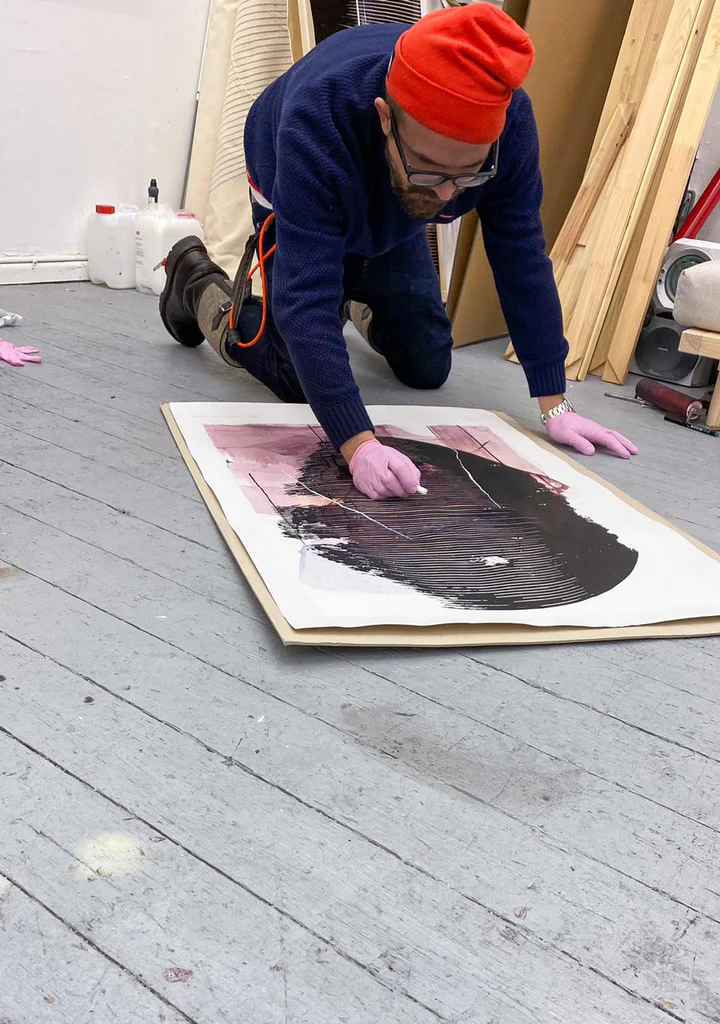
There are literally thousands of tutorials on painting and drawing. For sculpture, installation, or maybe even video art—in short, less accessible art forms—you might consider digging deeper and scoping the internet for tutorials and courses. Think of platforms such as Skillshare, where you can learn specific crafts or skills from home.
Further, today, there are no rules regarding how you should create art. From this perspective, being a self-taught artist can even be an advantage instead of a disadvantage. It is entirely up to you to paint alla prima or use glazing, with a paintbrush or a palette knife. Even more, you can just search for your own technique and methodology. Doing things differently is not a bad thing; on the contrary.
Explore, experiment, and experience freely throughout steps two and three. These experiments will be your compass to achieve your personal vision, identity, and oeuvre (cf. infra; Step 4).
Step 2: Educate Yourself in Art (History)
Step two is another crucial step when it comes to your development as an artist, but also when it comes to your credibility as a self-taught artist. One of the main things people often question with self-taught artists is if you have a decent frame of reference regarding your knowledge of art and art history. But once again, there is no reason why you should not be able to become an art expert, even if you do not hold a master’s degree in the arts or art history.
Even more, it is also crucial to know art history to have a decent understanding of art today and by extent, the role, and importance of your art. It would be naive to believe you can make it in the art world without knowing art. I can guarantee you your knowledge and intelligence will be tested as you try to climb up the ladder. So, how and where can we educate ourselves?
First, I advise starting with art history by reading the academic reference publications they use as textbooks at university. In fact, you can approach this step as an actual education, in which I highly recommend taking notes along the way. Not to use to study for an exam but to create a personal summary of art history, taking notes that can be useful for your own practice.
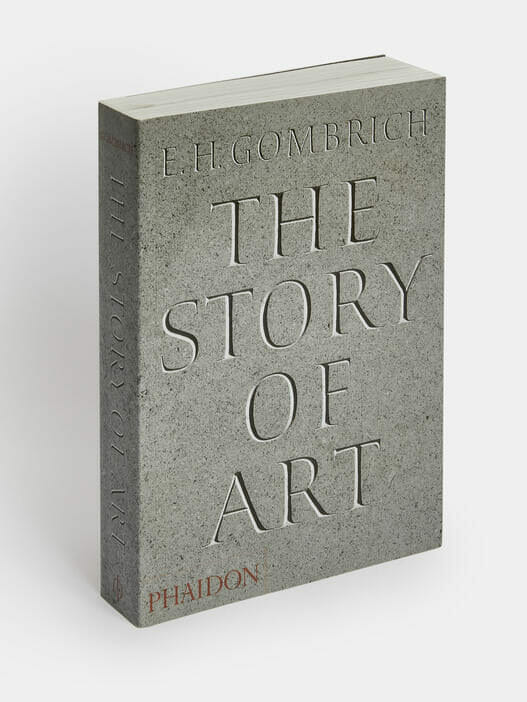
We start with general overviews of art history, encompassing the following publications that could be a great fit to educate yourself: A New History of Western Art — From Antiquity to the Present Day, The Story of Art, and The Art Book. These overview publications present the canon of art history. With every art movement or chapter, feel free to look at the notes to discover more specialized books on a specific era or artist. But to keep things simple first, the publications mentioned above are already pretty extensive and have a lot of information to take for now.
Next, we want to focus on our current era, from Modern Art to this day. The reference publications to read are Art Since 1900, Modern Art — A History from Impressionism to Today, and A History of Modern Art. These three are by far the most important reference publications on recent art history, and I would even advise, if possible, to read all three, whereas, with art history, one could be enough—but of course, the more, the better.
Now that we have a decent frame of reference regarding the canon of art, it is time to dig deeper and specialize ourselves in specific art movements, artists, and disciplines. Here, the selected publications depend on your interests and practice, but there are a few things I would like you to know about. Be careful with false information in self-published books. Anyone can write and publish a book these days. And even with small publishing houses, some very questionable art books are often being produced.
As a result, I would advise you to choose books from renowned art book publishers such as Taschen, Phaidon, Thames & Hudson, Skira, Prestel Publishing, Tate Publishing, Lund Humphries, or other famous art institutions acting as the publisher—think museums or universities. These publishing houses guarantee quality art research, trustworthy information, and authoritative authors and editors.
For instance, Phaidon has some terrific publications on almost any medium; think of Painting Today and Sculpture Today. Taschen’s basic art series is another excellent series of books on specific art movements and artists. The monographic publications by museums coinciding with a retrospective exhibition are also always a top-notch resource.
These are all examples of in-depth research and self-education regarding highly established art, but what about less established art? Some of the publishing houses have great publications about art today. Think of Phaidon’s series on new perspectives in art, with Vitamin P(ainting), Vitamin D(rawing), or Vitamin Ph(otography). But also the publications by galleries about the artists they represent and you might relate with.
This brings us to other sources to dig deeper and stay posted on contemporary art—think of renowned art platforms, art magazines, curatorial entities, and contemporary art museums. Even more in-depth and specialized information can be found in the academic literature on contemporary art. Whitechapel’s documents on contemporary art series is an excellent example of a publishing house compiling the most critical academic writings on a single issue or subject in contemporary art. And there are also academic writings that are indirectly related to art, like Foucault and Lacan.
But don’t be intimidated by the sheer depth of the world’s knowledge and information related to art. It is not necessary to become a true academic or Pictor Doctus to be successful. It is clear to say there are various levels of knowledge here, and I would say the first two are absolutely necessary; general art history and recent art history; followed by more specialized literature depending on your discipline, style, or interest.
Further, there are also some great ways to learn and stay posted on contemporary art that require less effort. Think of YouTube channels providing excellent information. But here, I must also add to be careful with what information, opinions, or advice you take as truth. Some excellent YouTube art channels really do their research and are factual, such as the Art Assignment and Great Art Explained, to name just a few, and some other channels are less trustworthy.
Or you could follow some renowned institutions, galleries, and platforms on social media—including YouTube, Instagram, and Facebook, or subscribe to their newsletter. Think of entities such as Artforum, Cura., the Museum of Modern Art, Gagosian, Thaddaeus Ropac, David Zwirner, or high-end art influencers such as Mary Lynn Buchanan and, of course, CAI (smiles).
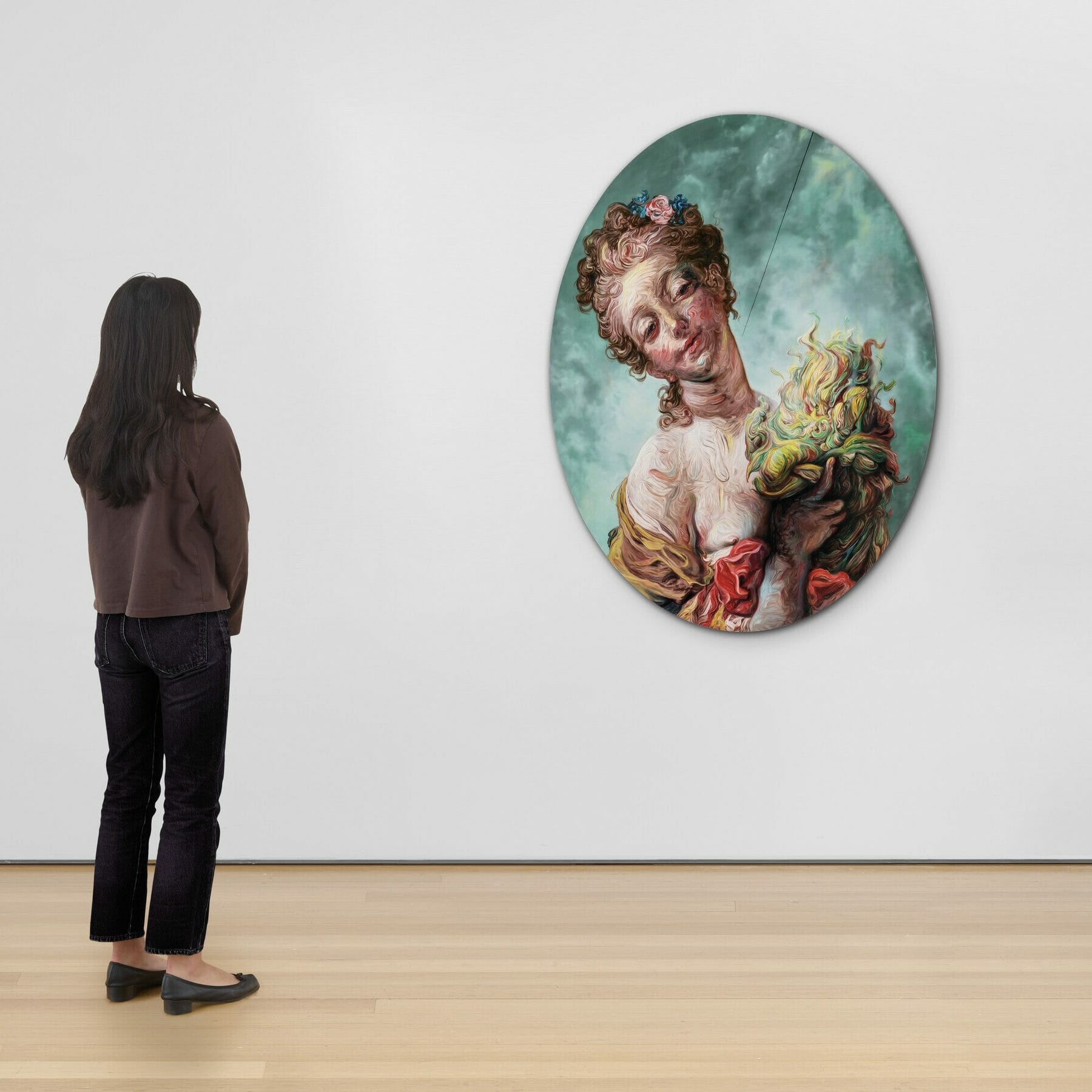
Curiosity is everything. Follow your natural interests. Stay in the loop. Immerse yourself in art and art history. PS: For a more extensive take on art books for self-taught artists, feel free to read our article and guide the art books for self-taught artists next.
Step 3: Get To Know The Art World & Field
Step two will naturally bring you to step three, which is getting to know the art world and the field of artists today. At first, this step might feel less important than the previous steps. However, it is not. The third ‘E’ we emphasized in our last chapter—experience—is at the center. Because the best way to get to know the art world is by experiencing it.
You might think you know, more or less, the art world. You have visited some museums in the past, and you currently follow some galleries and other artists on social media online. Well, I am sorry to burst any bubbles here; this is not enough. Art and the art world are filled with subtle details that ultimately make a difference.
Both when it comes to creating the art, finishing it, and presenting it in an artistic context such as a gallery, but also everything related to art exhibitions—think of creating a series of works or how works relate to one another in a show, the title of a show, how they describe the works and their metadata, how to talk about them, how to install them, inspirations on how to frame or present them, and so on. You need to have your finger at the pulse of the art world. What is trending today in galleries? How do their works look and feel?
The only way to get to know these subtleties that, in the end, make a difference is by experiencing them firsthand. Here, my advice is not the visit museums, but art galleries. Art museums are great for getting to know art that is canonized or being canonized as we speak—so I believe art museums are significant to combine with our previous step.
However, with art galleries, we discover art fresh from the studio. Whereas the museums primarily show established artists, galleries show art by emerging artists, mid-career artists, and new works by established artists. Further, art galleries are crucial to make a career. So it is essential to get to know them to have a clear understanding of them before we can join them.
As with art publications, we need to be critical of which galleries we learn—because there are also numerous ‘bad’ art galleries that aren’t doing things the right way. Some red flags for galleries to avoid are paintings hung from cords, packed gallery walls in which they hang as many paintings as possible, or the absence of a curated gallery program—meaning they do not organize exhibitions but simply present the art in the gallery as products in a store.
Some critical indicators of decent galleries are a curated exhibition program, a professional and minimal display, a press release with every show, a long-standing history as an art gallery, participating in art fairs, and being accepted on renowned gallery marketplaces such as Artsy or a professional gallery website.
The galleries that do things the right way are, of course, the most renowned galleries in the world, the so-called mega-galleries. As a result, this is a great place to start discovering the unwritten rules and behavior of high-end art and art galleries. Some mega-galleries are Gagosian, Hauser & Wirth, Pace Gallery, David Zwirner, White Cube, Lisson Gallery, Thaddaeus Ropac, Perrotin, Lehman Maupin, Victoria Miro, Marian Goodman, and many more.
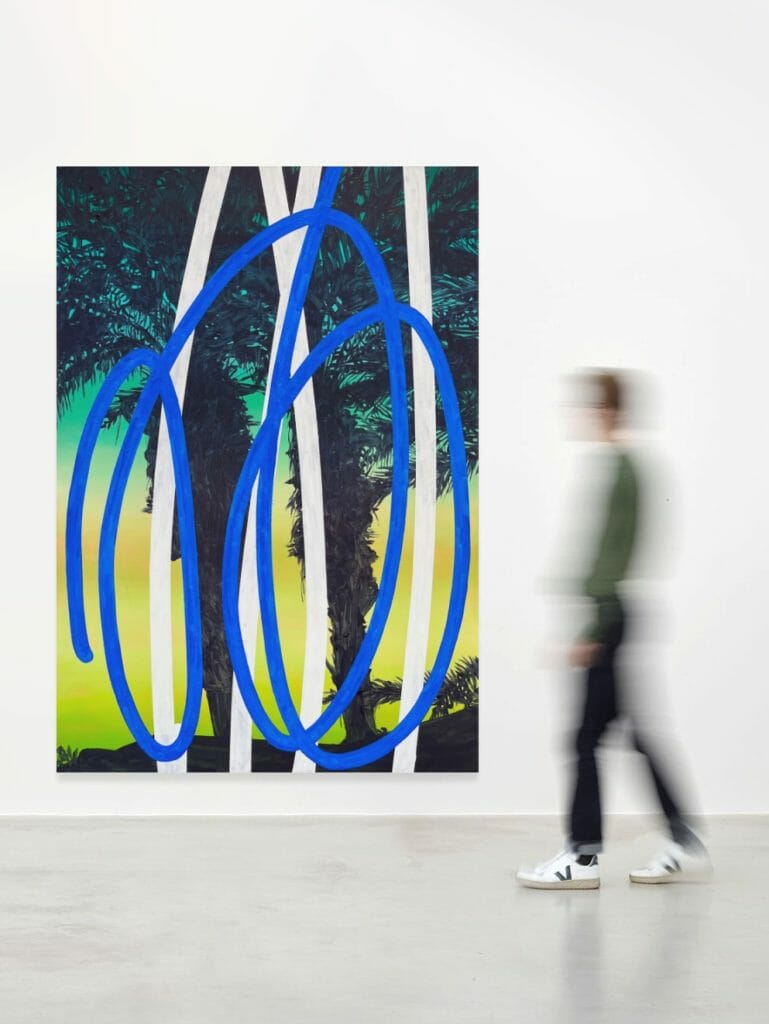
However, these aren’t the galleries where we will have our first shows. Now that we have a clear idea of top-notch galleries, let’s find some emerging galleries that could be a possible match in the foreseeable future. Try to find galleries that work similarly compared to the mega-galleries but are, of course, a bit smaller. A great place to find these galleries is the artguide by Artforum. You can simply select one of the numerous art cities they present closest to you, see what’s on, and start gallery hopping.
You will be amazed at how inspiring it is to see the works of fellow artists who are starting to make a name for themselves. Learn with your eyes. Please pay attention to how they distinguish themselves. How do they create recognizability from artwork to artwork within the exhibition—or from exhibition to exhibition?
At this point, you can connect with the gallery directors, but I would advise you not to. Or at least, do not say you are an artist, not yet. First and foremost, arguably, you and your work are not ready to be tested by the critical eyes of a gallery director, even though you might think so—and with these solicitations, you only have one shot.
Secondly, gallery directors are being bombarded daily by artists who introduce them, begging for collaboration or an exhibition, which is very tiring and even annoying for the gallery director. As soon as you say you are an artist, the gallery director will feel you are there not for the art but for your benefit, asking them to invest in you—which is not polite to do on a first meeting. So, be interested in the gallery first, and maybe one day, when you are ready and on the initiative of the gallery director, you can start to talk about your artistic activities with greater chances for success.
Other great places to get to know art and the field of artists today is at art fairs, lectures, art festivals, and events—think of the Venice Biennale, Art Basel, and so on. Visiting the ‘primary’ art world does indeed require some effort when it comes to traveling, making time, and being able to pay for the trip, but experiencing the art world firsthand and getting to know its subtleties makes the difference in the end when it comes to your personal development, understanding, and future career steps, so it can not be ignored.
Step 4: Develop Your Oeuvre — Create A Coherent Body of Work
Now we arrive at step four; we come at a crucial point in the artist’s career where the work becomes mature and forms an oeuvre—meaning: a coherent body of work marked by a clear vision, visual recognizability, and an ongoing and intriguing development.
After a period of experimentation (step one), having a great frame of reference as a foundation to create your own vision and identity as an artist (step two), and being inspired by art today (step three), we arrive at the point where everything starts to come together, slowly, but surely. You have discovered a medium you feel comfortable with, and you have a vision with clear goals that you aim to achieve within your work. It is time to polish, fine-tune, and professionalize this artistic production and create the artworks you will call part of your oeuvre for infinity.
Consistency is key in art. A vital exercise to obtain a coherent body of work and a steady development that makes sense is to write down an artist statement in which you discuss your vision, objectives, philosophy, methodology, and technique. All the ingredients from the previous steps will result in an utmost personal synthesis of who you are as an artist, what your art is, and discusses. This artist statement or vision will be your compass to guide your development, guaranteeing continuity even though you will continue to experiment, develop, and improve.
This artist statement is not a text to send to galleries or put on your artist’s website. It is a personal tool and a compass for consistent and coherent self-development. Now we have established what defines you as an artist; it is time to do it radically. Discover how you can push your vision further and further in your artistic practice. By doing so, you will be able to distinguish yourself and become more recognizable.
Because let’s speak plainly, being an artist is arguably one of the most fun jobs. As a result, the art world is oversaturated with thousands of artists—more than galleries, collectors, and curators are looking for. So you must stand out, whether you are a self-taught artist or have a Ph.D. in the arts. Be consistent. Be personal. Be recognizable. Stand out. Stay true to yourself and your vision.
The importance of this consistency is often a topic of consternation. Galleries and collectors do not appreciate radical shifts in an artist’s development because all of a sudden, it seems like to artist they invested time or money in is suddenly doing something else entirely. However, this does not mean you must do the same thing repeatedly.
On the contrary, if you do not develop, your oeuvre will become stale and boring, and you will be disregarded as a one-trick pony. So here we encounter one of those subtleties in the art world we have discussed in our previous step; the play of balance between consistency and change—or rather, developing. The thing is, as long as you stay consistent or true to your initial vision—or your vision and focus change coherently over the years—then variety is always a good thing. Let’s explain this tricky topic with an example.
Luc Tuymans is one of the most important and consistent painters of his generation—yet, he is able to switch from painting holocaust scenes to a Micky Mouse mural, a still life, to depicting numbers. First and foremost, his vision remains the same throughout all these pictures. He examines the image theory in relation to painting, encompassing simulacra, the flood of images, history, and moral complexity. But what connects these various topics visually are his characteristic nervous brushstrokes and muted palette, creating consistency and recognizability yet enabling the Belgian artist to take any subject, motif, or topic.
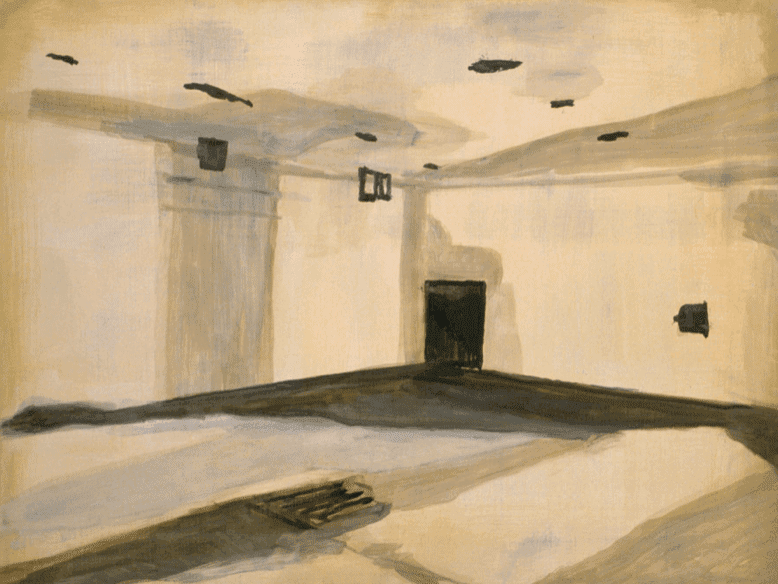
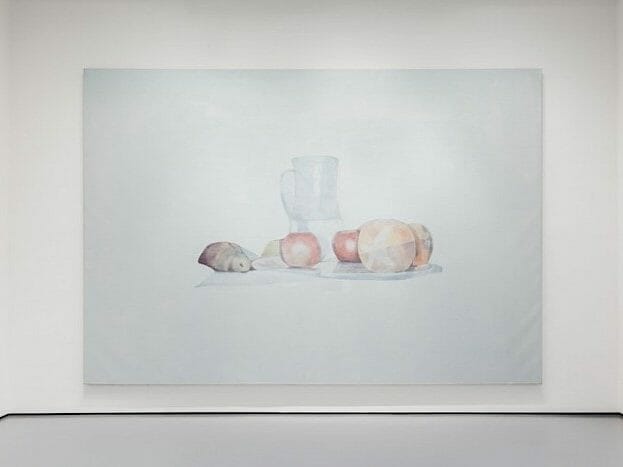
Numerous other artists are very versatile while remaining consistent. Think of Tracey Emin, who goes from installation to sculpture to figurative painting in a coherent manner using autobiographical elements and controversy as a foundation of her vision and artistic production. Or think of artists who dedicate their life to specific motifs and make them theirs, and examine them in numerous different ways, such as the polka dots and pumpkins of Yayoi Kusama or the cages, spiders, and spirals of Louise Bourgeois. And please pay attention to how these motifs are not random, but direct products of their vision and story.
Some artists can dedicate their entire life doing the same thing, purifying a single idea or technique—think of Mark Rothko or Carmen Herrera. And others even have a vision in which radical changes are part of their vision—creating consistency by the lack of it. Think of Maurizio Cattelan and Ryan Gander‘s intentional no-style style. Or what about Gerhard Richter, whose painterly oeuvre is marked by a never-ending quest for the possibilities of painting, ranging from photorealism to pure abstraction, minimal conceptual figuration, to hard-edge paintings?
Once again, the subtlety of these visions and the play of balance between consistency and development proves the importance of our previous steps. So try to understand the oeuvre of other artists in order to understand how you can create your own. Great starting points are a specific vision, philosophy, technique, or set of motifs.
Please write down your vision and pursue it radically in the studio. At this point, start to professionalize your studio practice. Use high-quality materials and finish every single artwork with the most excellent care. Every single work you create from here is to stay forever. The experiments become finished products, ready to be shown to the world. Time to start participating in the art world.
Step 5: Prepare Your Overall Artist Profile
In order to participate in the art world, we need to ensure that everything is correct, professional, and in line with the expected behavior of a serious artist—especially when being a self-taught artist. In this step, we will take care of every single aspect that you need to take care of to make sure your profile as an artist is appealing and professional.
By doing so, when the time comes to a collector or gallery director is interested in our work, they will see that everything is done the right way, increasing not only your credibility as a serious artist tremendously but also your chances to make things happen and making your career in the art world happen. I believe this is where a tremendous percentage of artists—self-taught or trained artists—fail and fall off the wagon, even when there is clear talent and potential.
So let’s go ahead and present an overview of what you need to take care of. But please note, try to stick with only the things we mention here. The way you present yourself as an artist online and to the world is all about being concise, formal, professional, and even a bit elusive. Anything else you would do that is not on this list can risk your credibility as an artist. So, how do we prepare our overall profile as an artist?
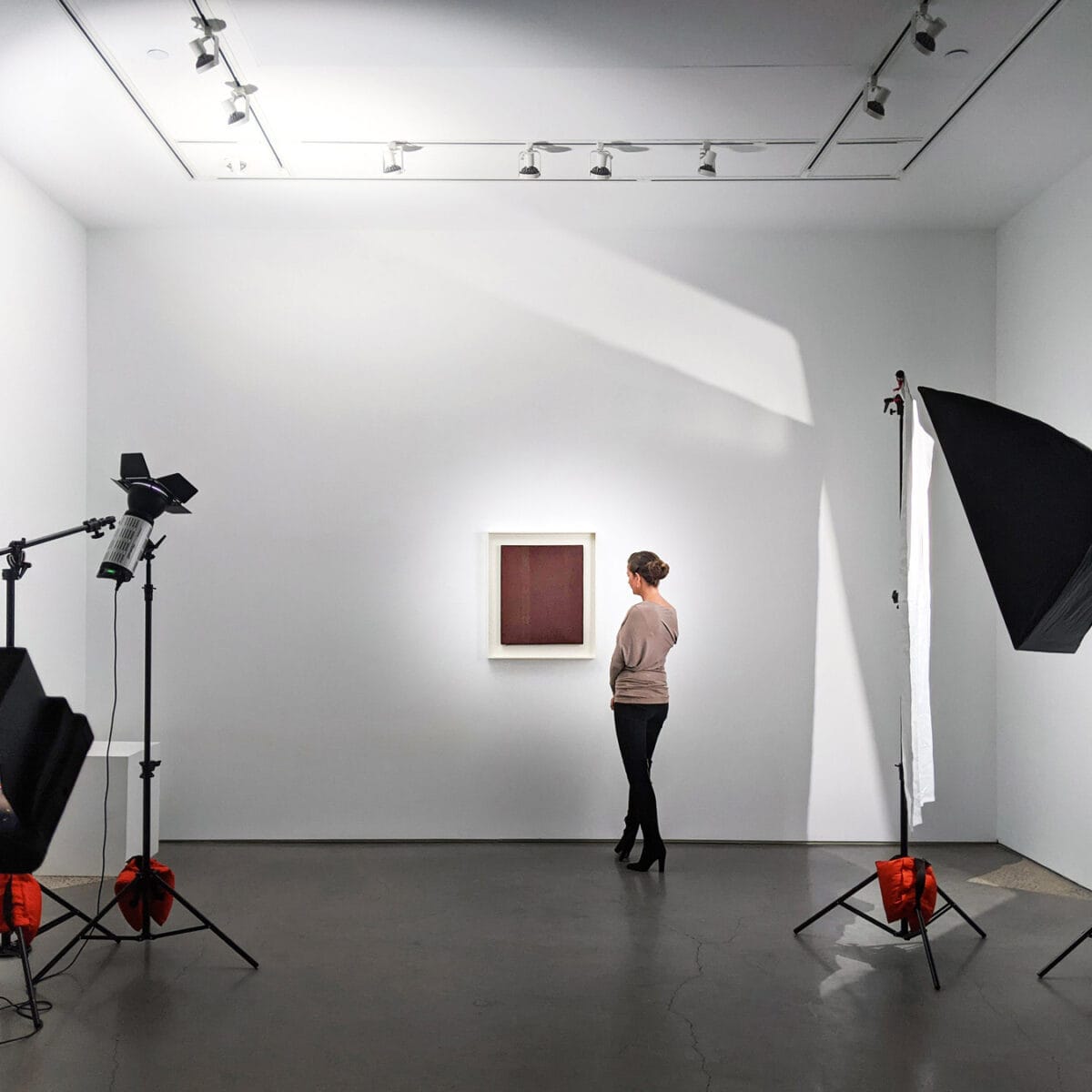
1. Documenting your art
First and foremost, we need professional images of our artwork. Photograph your images professionally. Have high-resolution files of your works cropped out, and possibly also a few installation or studio views of your works as objects in a room. Please note, do not simulate your works with apps in galleries or interiors. Clear up your living room or studio, rent a space, or take the opportunity when you have an exhibition to take high-end pictures. This will increase your credibility strongly. Document your artwork, writing down all metadata—meaning, title, year, medium, and dimensions. Create a catalog with what you have available to use for your future clients and galleries.
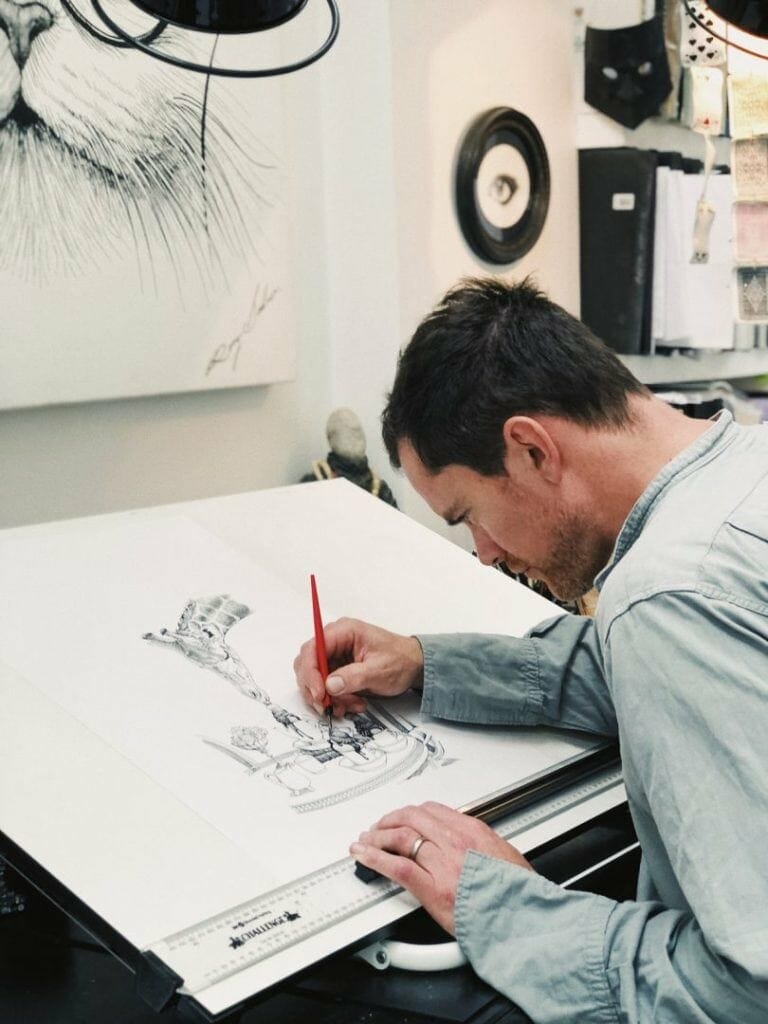
2. Artist resume
Up next, we will have to create an artist’s resume. It consists of all factual information and functions as a guide for galleries, collectors, and curators to know where you are at this moment in your career.
Your artist should include the year and country you were born, where you are based, training and education, relevant professional experience, your exhibition history, selected publications, press, awards, collections, and residencies. For a self-taught artist, I recommend you not to include being self-taught in your artist resume. Only write your education and training if applicable or relevant; otherwise, you can leave it blank.
Use this structure and look at the artist resumes of established artists or gallery websites. Follow the same form, structure, and professional approach. Don’t worry if you have little to write down on your artist resume. It will be our mission in the next step to improve and supplement the resume year by year. There is no shame in having just a few or even zero exhibitions so far; we all started somewhere. In fact, we have dedicated a complete article on how you can set up your artist resume with little to no experience.
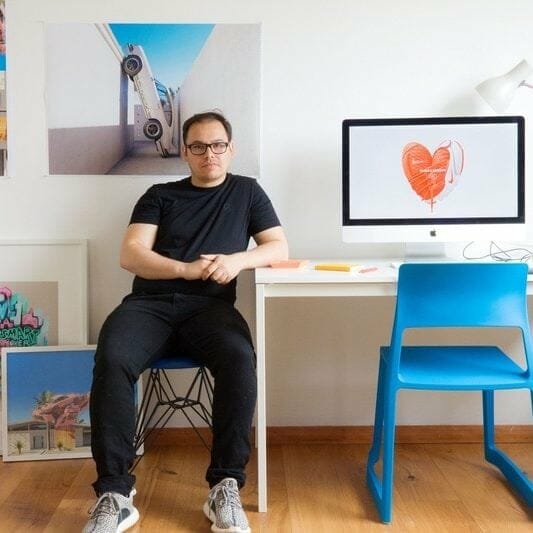
3. Artist website
Your artist website is your online business card and portfolio. Once again, your artist’s website will need to communicate professionalism. As a result, you must go for a minimal and, above all, high-end design characteristic of the art world. Less is more. Use the websites of high-end established and emerging artists as an example. You should have a minimal homepage, a page with selected works showing only your very best works, a page with your artist’s resume and possibly a biographic text written in the third person or by an art critic, and a contact page. Anything else, such as a blog, a webshop, merchandise, et cetera, is an unnecessary risk to take. Trust us; the interested collector will email you for pricing and availability of your work. So no need to show prices online or have a webshop—but this is a different discussion for a different article.

4. Social media
When it comes to social media, once again, the most important thing is not to overdo it. Our general rule of thumb is to focus on the most powerful social media platform for artists today—Instagram. You would be surprised how many gallery directors and collectors find and contact new artists via Instagram. You can build a following online, which increases your credibility once more. YouTube is also a powerful platform, but for now, it is still somewhat frowned upon for artists to ‘vlog’ in the traditional art world, even though all significant art organizations are active on YouTube. Still, for now, I advise you to focus 100% on Instagram and remain professional with your posts.
Step 6: Make A Career Organically & Think Long-Term
At this point, you are all set. You have experimented and educated yourself, getting to know the subtleties and expected behavior in the art world that makes the difference, resulting in a mature and coherent body of artwork that is documented and accessible online via your website and social media. Now, it is time to make things happen!
We already mentioned Instagram as a great place to get discovered; however, there is more you can do to make a career as an artist. However, before we dive into the specific actions you can take, let’s discuss what you should avoid.
Aggressive self-promotion is hugely frowned upon. In the art world, you can not force things. So don’t go overboard on over-promoting yourself actively—don’t cold call galleries, magazines, collectors, and institutions. Do not approach your art as a commercial product to sell, promoting it with ads, flyers, discounts, and so on. Remain professional and never impose yourself as an artist on others. Instead, try to make a career organically, thinking long-term, by leaving breadcrumbs in the art world that eventually will make the galleries, collectors, and magazines come to you.
Participate in the art world, visiting exhibitions and galleries as discussed in step three—network organically by discussing art based on genuine interest instead of self-interest. Connect with other artists and be involved in the art scene where you want to prosper.
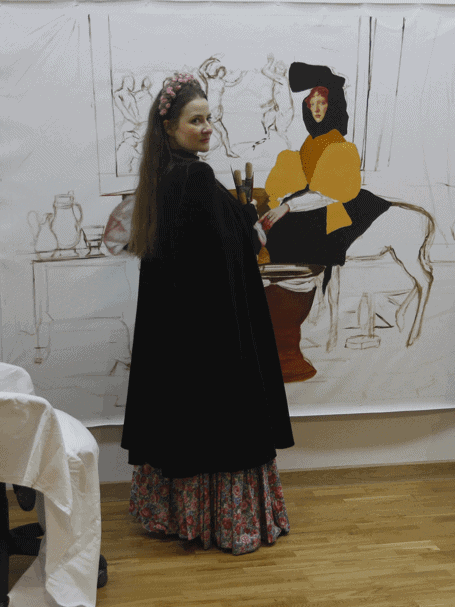
Even if you are an introvert and not a master in networking, you can actively increase your chances of making a career in the art world by searching for opportunities in the art world. Think of open calls for exhibitions, art residencies, art contests, grants, a project-based open call for art in the public space, and so on. A great place to find these opportunities is via the platform Artenda.net to stay posted on the most exciting art opportunities for you.
It all comes down to being around and being well-prepared as an artist. Trust the process. When the art is good, your overall artist profile has been set up correctly, and you haven’t been imposing yourself as an artist but are involved naturally and organically, people will stumble across your work. And when they see your profile as an artist is appealing and professional, they will contact you—whether you are self-taught or not.
This is where the ball starts to roll. One exhibition—be it via an open call, a gallery invitation, or with fellow artists—will lead to another. If you would like to know more how you can take your career to the next step and go full-time as a self-taught artist, feel free to read our article 20 Ways Artists Earn Money next.




